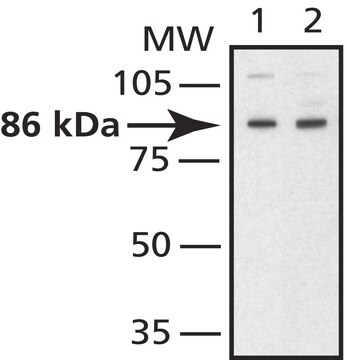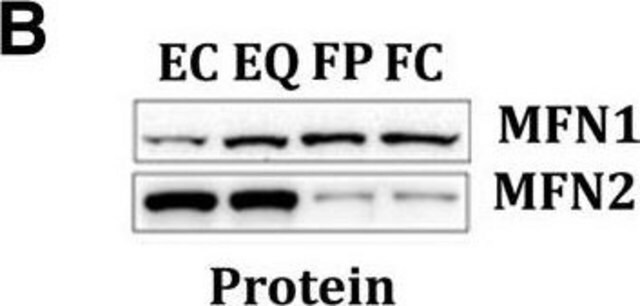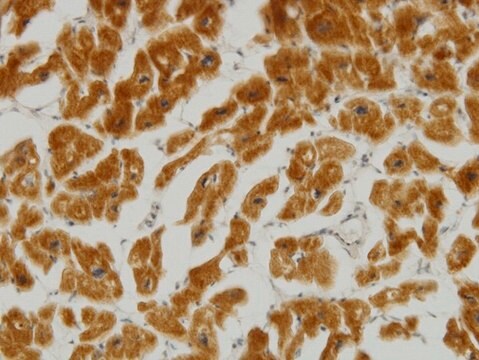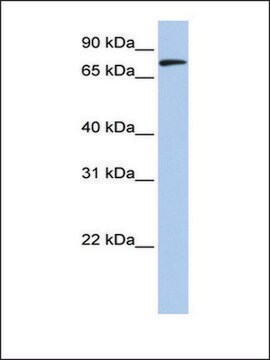M6319
Anti-Mitofusin-2 (N-Terminal) antibody produced in rabbit
affinity isolated antibody, buffered aqueous solution
Sinonimo/i:
Mitofusin 2 Antibody, Mitofusin 2 Antibody - Anti-Mitofusin-2 (N-Terminal) antibody produced in rabbit, Anti-CMT2A, Anti-CMT2A2, Anti-CPRP1, Anti-KIAA0214, Anti-MARF, Anti-Mfn2
About This Item
Prodotti consigliati
Origine biologica
rabbit
Livello qualitativo
Coniugato
unconjugated
Forma dell’anticorpo
affinity isolated antibody
Tipo di anticorpo
primary antibodies
Clone
polyclonal
Forma fisica
buffered aqueous solution
PM
antigen ~86 kDa
Reattività contro le specie
mouse, human, rat
tecniche
immunoprecipitation (IP): 5-10 μg using HeLa human epitheloid carcinoma cell lysate
indirect immunofluorescence: 20-30 μg/mL using differentiated mouse C2 cells
western blot (chemiluminescent): 0.5-1 μg/mL using extracts of rat or mouse brain mitochondria
N° accesso UniProt
Condizioni di spedizione
dry ice
Temperatura di conservazione
−20°C
modifica post-traduzionali bersaglio
unmodified
Informazioni sul gene
human ... MFN2(9927)
mouse ... Mfn2(170731)
rat ... Mfn2(64476)
Descrizione generale
Specificità
Immunogeno
Applicazioni
By immunoblotting, a working antibody concentration of 0.5-1 mg/mL is recommended using an extracts of rat and mouse brain mitochondria and a chemiluminescent detection reagent.
By indirect immunofluorescence, a working antibody concentration of 20-30 mg/mL is recommended using differentiated mouse C2 cells.
5-10 mg of the antibody immunoprecipitates mitofusin 2 from HeLa human epithelioid carcinoma cell lysate.
Western Blotting (1 paper)
Stato fisico
Esclusione di responsabilità
Non trovi il prodotto giusto?
Prova il nostro Motore di ricerca dei prodotti.
Prodotti correlati
Codice della classe di stoccaggio
12 - Non Combustible Liquids
Classe di pericolosità dell'acqua (WGK)
WGK 1
Punto d’infiammabilità (°F)
Not applicable
Punto d’infiammabilità (°C)
Not applicable
Certificati d'analisi (COA)
Cerca il Certificati d'analisi (COA) digitando il numero di lotto/batch corrispondente. I numeri di lotto o di batch sono stampati sull'etichetta dei prodotti dopo la parola ‘Lotto’ o ‘Batch’.
Possiedi già questo prodotto?
I documenti relativi ai prodotti acquistati recentemente sono disponibili nell’Archivio dei documenti.
Il team dei nostri ricercatori vanta grande esperienza in tutte le aree della ricerca quali Life Science, scienza dei materiali, sintesi chimica, cromatografia, discipline analitiche, ecc..
Contatta l'Assistenza Tecnica.






